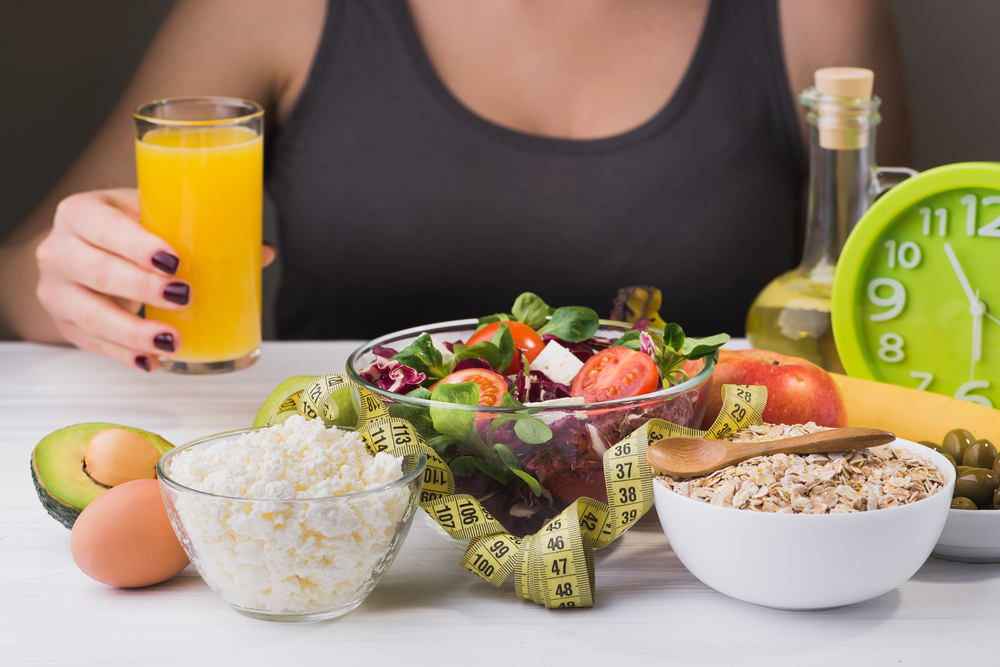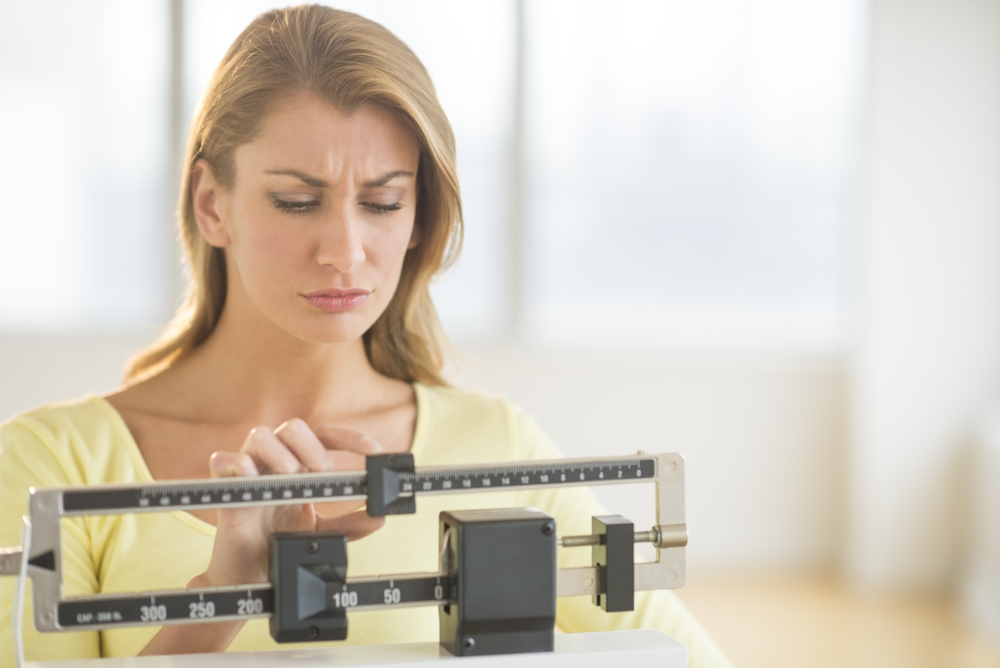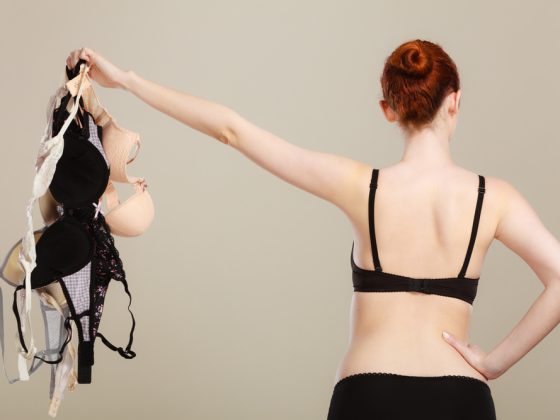Women come in all different shapes and sizes, and a woman can be as beautiful at 125 pounds as she can be at 250 pounds.
Despite this fact, society often makes women feel as if they’re overweight and unattractive, even if they’re only a few pounds above what’s considered the “average” weight for a woman.
In the 1950s, the average woman was even thinner than the average woman is currently.
The average weight of a woman in 1950 was approximately 136 pounds, and she had a 27.8-inch waist, 37-inch hips, and wore a size 34B bra.
The average woman these days weighs 154 pounds, has a 34-inch waist, and wears a 36DD-sized bra.
Despite the nearly 20-pound weight difference over the past several decades, women these days are still quite healthy and happy.
Regardless of your current weight and height, you may or may not be happy with your body.
Social media can make women feel insecure about themselves, even if their height and weight are proportionate.
Here are some important things about weight that you should always remember:
Table of Contents
Accept yourself regardless of your weight

Regardless of your current weight, whether you’re considered underweight, overweight, or somewhere in between, it’s important that you accept yourself.
Putting yourself down and hating the way you look simply isn’t healthy, and it can promote low self-esteem, depression, and really make you miserable.
If you’re having difficulty accepting yourself, you might want to read some books on self-love and self-acceptance and work on loving yourself.
Realize that only you can change your weight
If you’re not happy with your current weight, you need to realize that you are in control of it, so you can change it.
Even if you’re 100 or more pounds overweight and losing weight seems impossible, you can do it.
The first step to making a change is to visit your doctor, who can perform some routine tests to rule out any underlying conditions and recommend an eating plan that can help you reach your goal weight.
Don’t choose a fad diet to follow

The first thing most women do when they decide that they want to lose weight is look for a diet to follow.
There are many popular diets, some of which actually produce results, like Keto and other low-carb diets, but every woman is different and needs different things.
While keto may work great, you have to determine if whatever diet you opt to try is something you can sustain.
It’s easy to create a customized diet
If you’re not sure how to customize a diet to help you lose weight, your doctor can refer you to a nutritionist.
You can also write down a list of all your favorite foods and develop a plan.
If you love pizza, for instance, you can eat it less frequently and even make your own pizza with less fat, fewer calories, and fewer carbs.
It is possible to lose weight while eating healthier alternatives to your favorite foods

It’s easier than you may think to lose weight while continuing to eat your favorite foods, as long as you eat alternative versions of them.
For instance, if you love to drink sodas and eat potato chips, there are so many healthier variations of these two items that you can enjoy instead.
There are high-protein, low-carb chips, sodas sweetened with stevia, and much more.
Why creating your own eating plan is best
If you’re going to lose weight and keep it off, quick-fix diets won’t work long-term.
Sure, you can lose weight initially and even reach your goal weight, but most people who diet and lose weight revert to their old way of eating and eventually regain the weight.
You need to develop a customized and sustainable nutrition plan that will enable you to enjoy your favorite foods in moderation. Only then will you be able to lose weight and keep it off.
Not every woman is average

Even though the average woman is 5’4 and 154 pounds, not every woman is going to be that same height and weight.
If you’re 5’5 and 175, as long as you’re healthy, there is nothing wrong with not being average.
Be proud of who you are, regardless of your weight, and tell yourself that you don’t need to be “average” to be beautiful.
Supermodels don’t depict the average woman
If you’re looking at supermodels as your motivation to lose weight, you need to keep one important thing in mind: supermodels are often extremely thin, sometimes to the point of being dangerously underweight.
Not only is this unhealthy, but it’s unrealistic as well.
All women are different. Some are genetically predisposed to be very thin, some average, and some bigger boned, so you should refrain from comparing yourself to supermodels or anyone else.
Your average weight will depend on various factors

Your average weight will depend on various factors, such as your age, bone structure, height, and more.
For instance, if you’re a much taller woman than average, such as around 5’10 or taller, then your average weight will likely be higher as well.
Your average weight will also vary with age because if you’re older, your average weight will likely increase.
Your weight doesn’t define you
Regardless of your current weight, you need to understand that your weight doesn’t define you.
Some of the most attractive, intelligent, and kind women are anything but average in weight.
The way you treat others, your positivity, your kindness, and your genuine self are much more important than your number on the scale.
Overweight women also deserve to be treated with love

Even if you’re very overweight, it doesn’t mean that you’re unworthy of being loved or of being treated kindly.
Being overweight simply means that you weigh more than average.
If your weight is affecting your physical health, then it is important that you take steps to improve it. Obesity can be very expensive, and more and more insurance plans are charging obese individuals higher premiums because weight-related diseases are real.
What are some examples of weight-related illnesses?
High blood pressure, diabetes, sleep apnea, gallstones, and osteoarthritis are just some of the weight-related diseases that can cause insurance costs to skyrocket.
However, weight loss can cause many of these diseases to improve or even go into remission, so if you’re overweight and you’re suffering from one or more of these diseases, they don’t have to be permanent.
See your doctor for management of the conditions until you’re able to reach a more normal weight.
How are statistics pertaining to weight obtained?

Data regarding the average weight of a woman is obtained from various sources, but one of the most reputable sources is the Center for Disease Control (CDC).
Researchers are instructed to obtain these results after conducting various research studies and collecting data from program participants.
You can obtain other weight-related statistics by visiting the CDC’s website.
The average waist measurement and weight are projected to increase
Although some studies from 2017 show that the average weight of a woman is currently around 154 pounds with a 34-inch waist, other studies from reputable sources state that that average is now closer to 170 pounds with a 38.5-inch waist (as of 2021).
It is obvious that women are becoming larger and larger, and these statistics are based on women who are of average height, which is around 5’4.
Perhaps in another ten years, the average weight will be even higher, but the larger a woman becomes the unhealthier she becomes.
As you can see, the average weight of a woman has changed dramatically since the 1950s and will likely continue to evolve as years go by.
Regardless of what the average weight is, every woman is different and will have her own individual average.
If you’re not happy with your own average weight, then you can change it; all you have to do is create a healthy plan to reach that desired weight and it can happen.




